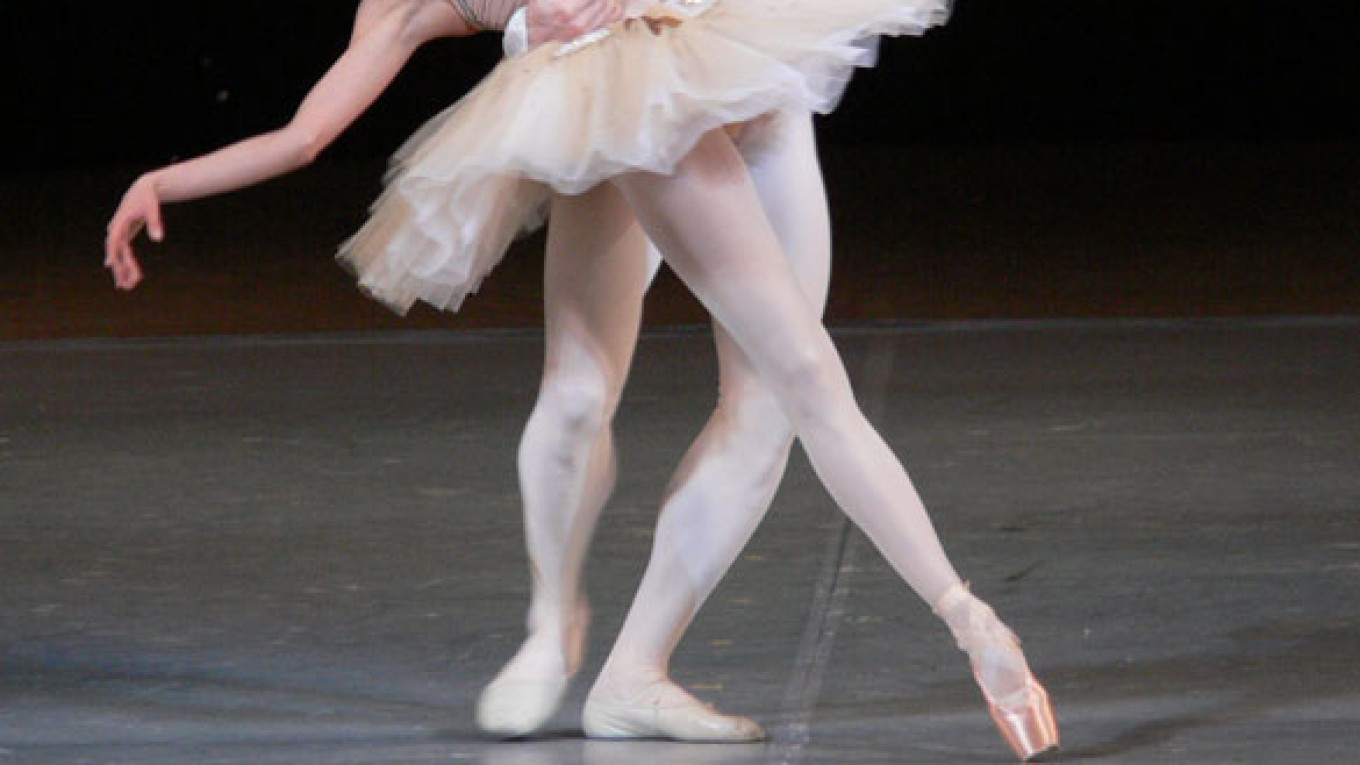This weekend the Bolshoi Theater pays tribute to Igor Stravinsky’s ballet “Petrushka” in advance of next year’s 100th anniversary of its premiere with a new production that combines choreography from a version staged in Petrograd, now St. Petersburg, in 1920 with costumes and decor based on designs for a production at the Bolshoi a year later.
“Petrushka” made its debut in Paris on June 13, 1911, in the course of the third of impresario Sergei Diaghilev’s famous “Saisons Russes.” Choreography was the work of Mikhail Fokin, Diaghilev’s then principal choreographer; artist Alexander Benois conceived the story and designed the costumes and sets; and the legendary Vaslav Nijinsky danced the title role.
Though not all were pleased by “Petrushka” at its premiere — Stravinsky’s modernistic score received particular scorn — the ballet went on to be toured extensively by Diaghilev’s Ballets Russes with considerable success. Over the years since then, the score has come to be performed frequently in concert, while the ballet, though hardly neglected, has never achieved the status of a repertoire standard.
In charge of staging the Bolshoi’s new “Petrushka” is Sergei Vikharev, one of Russia’s leading experts in the restoration of ballets from the past. Last season he brought Leo Delibes’ “Coppelia” to the Bolshoi, in a version originally created by master choreographer Marius Petipa for St. Petersburg’s Mariinsky Theater in 1894. Much more inspiring than that proved to be his Petipa restorations for the Mariinsky, notably, Pyotr Tchaikovsky’s “Sleeping Beauty” and Ludwig Minkus’ “La Bayadere,” both of which have been shown on tour in Moscow.
“The choreography of the 1921 Bolshoi production has been completely lost,” Vikharev said in an interview at the Bolshoi on Tuesday. “But the production of a year earlier at what is now the Mariinsky was later danced at the MALGOT [Leningrad’s Maly Theater of Opera and Ballet, a center of experimental musical theater during the 1920s], and it was there that dancers recorded the choreography in notation. The choreography was, of course, mostly that of Fokin. But some of the dancing was made more grotesque.”
Fokin’s choreography, according to Vikharev, “was absolutely different from anything he learned in school. Nevertheless, because of his Mariinsky background, Fokin was very definitely an heir to Petipa. And that can certainly be detected in ‘Petrushka.’”
Benois also created the decor and costumes for the 1921 Bolshoi production, and his drawings have been carefully preserved in the Bolshoi’s archives. “The sets differ somewhat in composition from those of the Diaghilev production,” Vikharev said, “and the colors are somewhat different as well.”
For the story of “Petrushka,” Benois drew on the stock figures of commedia dell’arte, which then enjoyed considerable popularity in Russian painting and theater, and set the action in St. Petersburg of the 1830s.
The ballet opens on a crowded Admiralty Square during the pre-Lenten festival of maslenitsa. The curtains of a puppet theater suddenly open to reveal life-size figures of the clown Petrushka, the Ballerina and the Moor. The three descend to the pavement and dance to the flute accompaniment of the theater’s proprietor, known as the Conjuror. Following the performance, Petrushka is confined to his cell-like backstage room, where he reveals himself to be a puppet with a soul, angry at his treatment by the Conjuror, in love with the Ballerina and jealous of her attraction to the Moor. The action then moves to the Moor’s well-appointed backstage room. As the Moor is about to succeed in seducing the Ballerina, Petrushka breaks in. The Moor chases him away. Back again on Admiralty Square, the puppets emerge from the theater, the Moor chasing Petrushka with a sword. Petrushka is mortally wounded. The police arrive to investigate, and the Conjuror reveals Petrushka to be nothing more than a puppet stuffed with straw. But as the crowd disperses, the ghost of Petrushka appears on the theater roof, shaking its fist at the Conjuror, who flees in terror.
Diaghilev biographer Richard Buckle has written that “‘Petrushka’ should have been pickled for posterity in its splendid score” and now “has only a historical interest.” Many would disagree with that assessment. For my own part, I have always found it a marvelously entertaining and quintessentially Russian combination of music and dance that seems nearly as fresh and original today as it must have to audiences a century ago.
Rounding out a triple bill with the 40-minute-long “Petrushka” will be former Bolshoi ballet artistic director Alexei Ratmansky’s “Russian Seasons,” probably the crown jewel of the Bolshoi’s current ballet repertoire and winner this year of a Golden Mask award, and current ballet artistic director Yury Burlaka’s restoration of Petipa’s elegant “Grand Pa Classique” from the ballet “Paquita.”
“Petrushka,” together with “Russian Seasons” and “Grand Pa Classique,” plays Friday, Saturday and Sunday at 7 p.m. at the New Stage of the Bolshoi Theater, 1 Teatralnaya Ploshchad. Metro Teatralnaya. Tel. 250-7317, www.bolshoi.ru.


